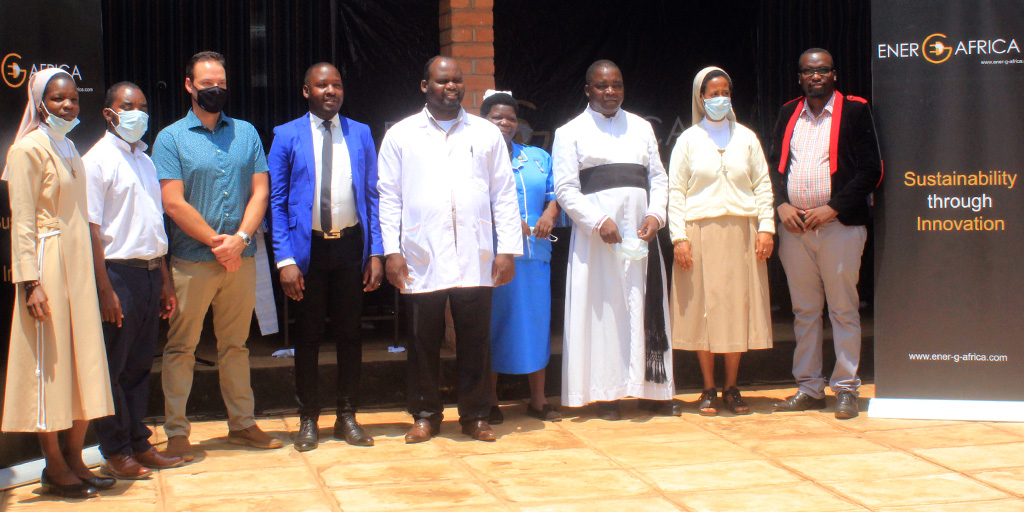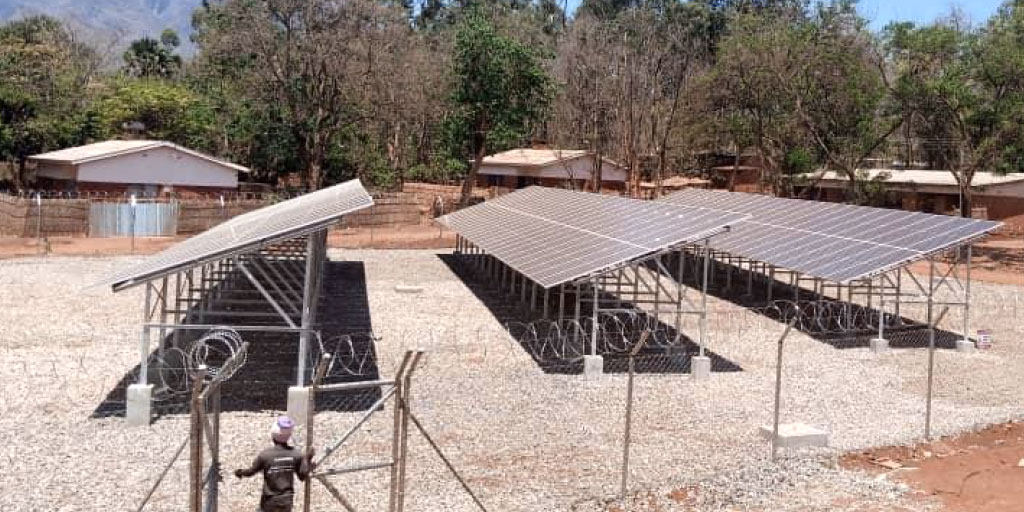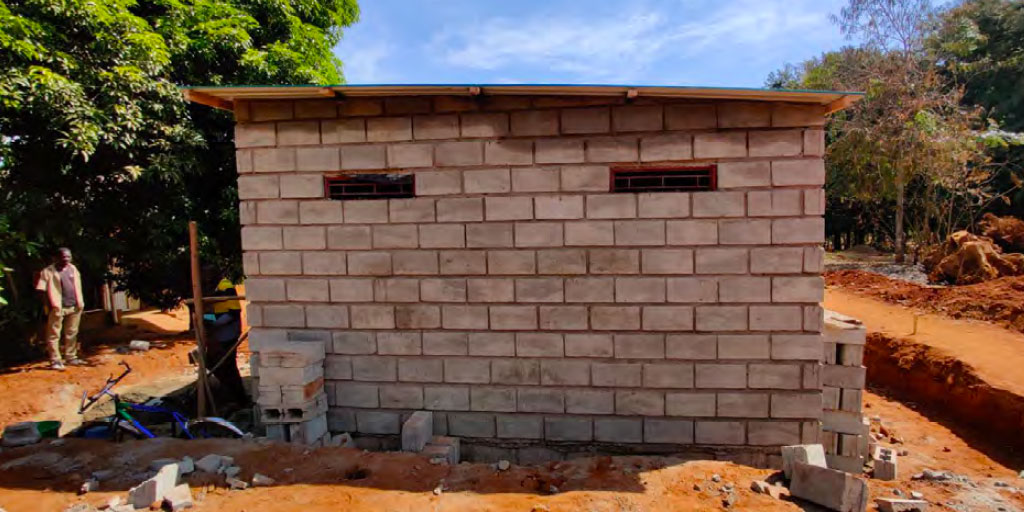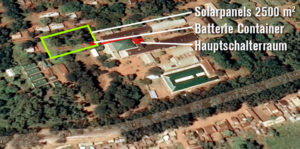Solar Projekt
 November 12th 2020 – Opening ceremonies without Swiss guests
November 12th 2020 – Opening ceremonies without Swiss guests
Our newest project in the hospital Phalombe, was put into operation at the end of October 2020 with opening ceremonies on a small scale.
Unfortunately, due to current travel restrictions, no one as a representative of our association was able to attend on site. However, this does not diminish our joy at having now completed the work – a 60 kWp photovoltaic system to secure the energy supply of the Phalombe hospital.
MBC-Radiointerview with Father Boniface Tamani (1:16)
Capital Radiointerview with Richard Bunderson, Ener-G-Africa Ltd. (0:50)
 October 23rd – 2020 Solar system is in operation
October 23rd – 2020 Solar system is in operation
Pro Phalombe is very proud to announce that our solar installation in the hospital is completed. The system was tested and put into operation a few days ago.
It has already experienced a trial by fire – a tree fell on the ESCOM lines near the hospital, so the power was cut off for about 4 days. During this time, the hospital ran almost exclusively off of the solar system. The solar panels provided enough energy to power the hospital through the day, and the batteries lasted well into the night.
October 22nd 2020 – The solar project is taking shape
The security fence has been built, the panels are installed – we are confident that the work will be completed in a few weeks.
August 17th 2020 – Solar Project – new work
Batteries, shelves and solar panels were sent to Phalombe.
Next, the batteries will be installed and connected to the hospital. With the construction of the security fence (wall), the solar panels will be fixed and installed – the last big step towards a self-sufficient power supply at Phalombe Hospital.
 June 15th 2020 – Status Summary
June 15th 2020 – Status Summary
As a result of Covid-19, the timetable has been further delayed. The inverters from Taiwan were fortunately delivered by air freight and a large part of the batteries have already arrived in Malawi. However, the panels are still in South Africa. They cannot be delivered due to all border closures.
In Phalombe, the clearing and tree felling operations were successfully completed. The construction of the building for the batteries and inverters was completed. It is well ventilated and an air conditioning system will keep the temperatures constant.
The available inverters and batteries will be installed in June and connected to the hospital. The system has been designed as a hybrid system - it works with both DC-fed solar PV and AC-fed alternating current. The inverters can charge the batteries with power from ESCOM and in case of a power failure the hospital will be supplied by the batteries.
The next steps include the construction of a security fence around the solar system, the substructure work for the panel supports and the installation of the eagerly awaited solar panels from South Africa.
 March 14th 2020 – Status Summary
March 14th 2020 – Status Summary
As announced at the association meeting in June 2019, we have started the solar project with excitement. We have taken into account that the rainy season would hinder us in this large-scale project. But now the big rain has slowed down the schedule a bit. The construction work on the ground, especially the levelling and the foundation for the solar panels, could not be done last year due to the wetness.
The project timing now envisages that the ground work can begin in March and that the installation of the solar system will then be pushed ahead rapidly until June.

Project status – actual situation
With today's unreliable energy supply, the basic services at Phalombe Hospital cannot be provided. Power outages are becoming increasingly regular and last several hours a day. ESCOM′s national power grid cannot provide reliable hydroelectric power. Climate change and increasingly low water levels exacerbate the situation. Backup by the hospital's own diesel generator is expensive and unreliable. Important life-supporting machines cannot function and therefore cost lives.
In 2019 the local hospital management and the Pro Phalombe association declare the realisation of the solar project the next priority of a future-oriented infrastructure optimisation.
Advantages of photovoltaic (PV)-technology
- Photovoltaic technology is cost-effective and reliable.
- The solar system is intended to replace the ESCOM grid, thus reducing the daily load.
- The solar system saves about US$ 55'000 annually, which was previously spent on electricity and generator costs.
- The first operational priority is solar power and ESCOM, solar power and battery the second, only battery the third (at night). Generators are only used at night as last resort.
- Used as a way out when the batteries are empty and power from ESCOM is not available.
- The batteries allow a mains-independent operation without ESCOM, generators or sunlight for 8 to 15 hours.
- The system design allows flexible expansion and integration of more battery storage. This increases the availability of energy and reduces generator operation.
- The SCADA system (supervisory control and data acquisition) enables remote monitoring for reliable operation.
- Energy-saving LED lighting is installed and old devices with poor efficiency are upgraded to reduce the total load.
- Lifetime of the system: 20 years photovoltaic system and 10 years batteries
Technical details
- PV capacity (DC) 60 kWp
- Inverter output (AC) 50 kW
- Battery capacity (usable) 105 kWh
- Battery backup time 13 kW for 8 hours
- Depth of discharge 100%
- Guarantee period 3600 Full Cycles
- Expected life cycle 10+ years
